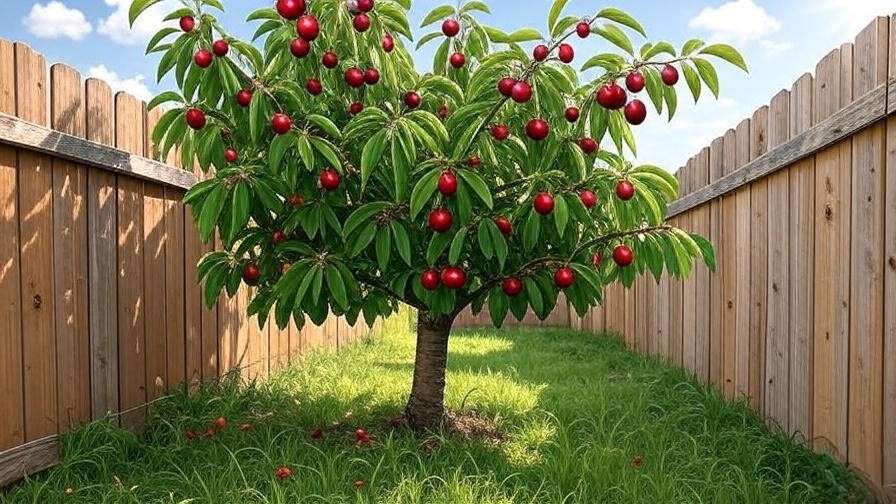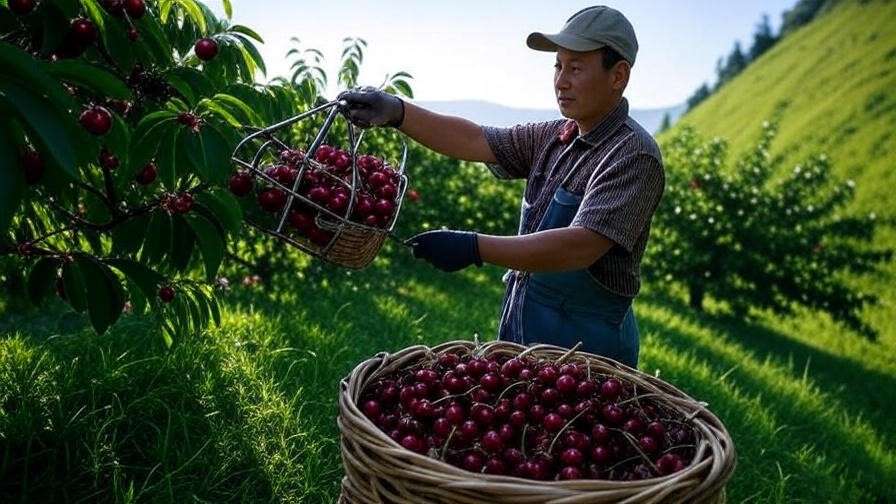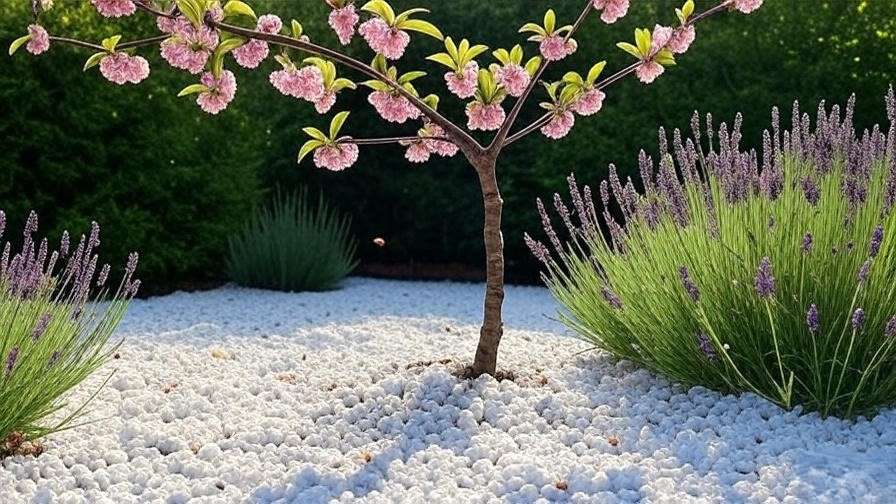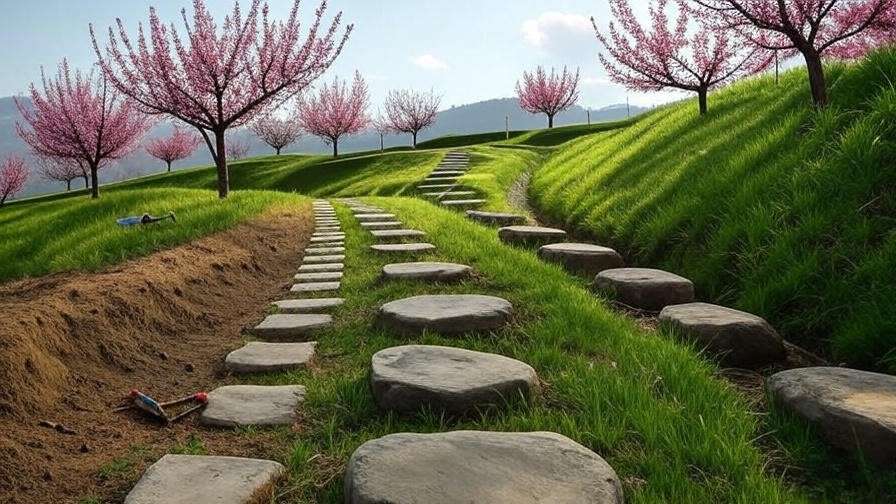Picture this: that neglected, awkward corner of your yard—steep, rocky, or tucked away in the shade—transformed into a flourishing cherry tree orchard bursting with juicy, ruby-red fruit! 🍒 Growing cherry trees in hard-to-reach areas of your yard might seem daunting, but with the right strategies, it’s not only possible but incredibly rewarding. Whether you’re dealing with a sloped hillside, a narrow strip by the fence, or a shaded nook, this guide will show you how to turn challenging spaces into productive, beautiful orchards. As a horticulturist with over a decade of experience cultivating fruit trees in unconventional settings, I’ve seen firsthand how these tricky spots can become garden gems. In this comprehensive article, you’ll discover expert-backed, actionable steps to select, plant, and maintain cherry trees in even the most difficult areas, ensuring a bountiful harvest and a stunning yard. 🌿
Understanding Hard-to-Reach Areas in Your Yard 🏞️
What Makes an Area “Hard-to-Reach”?
Hard-to-reach areas in your yard are those spots that pose challenges for gardening due to their physical or environmental characteristics. These might include steep slopes that make access tricky, narrow strips between buildings or fences, rocky or compacted soil, or shaded corners with limited sunlight. These areas are often overlooked because they seem impractical for planting, but they hold untapped potential for growing fruit trees like cherries. According to a 2023 study by the University of California Cooperative Extension, underutilized yard spaces can be transformed into productive micro-orchards with proper planning, making them ideal for homeowners looking to maximize their property’s potential.
Benefits of Growing Cherry Trees in These Spaces
Planting cherry trees in hard-to-reach areas offers multiple benefits. First, it optimizes space, turning wasted areas into productive orchards. A single dwarf cherry tree can yield up to 20 pounds of fruit annually, even in a confined spot. Second, cherry trees add aesthetic appeal with their spring blossoms and lush foliage, enhancing your yard’s beauty. 🌸 Third, they support local ecosystems by attracting pollinators like bees and improving soil stability on slopes. For example, a homeowner in Oregon transformed a rocky hillside into a thriving cherry orchard, reporting not only a steady fruit supply but also reduced soil erosion.
Choosing the Right Cherry Tree Varieties for Tricky Spaces 🍒
Dwarf and Semi-Dwarf Cherry Trees
For hard-to-reach areas, dwarf (8-10 feet tall) and semi-dwarf (12-15 feet tall) cherry trees are game-changers. Their compact size makes them perfect for tight spaces, such as narrow side yards or small patios. Popular varieties like Stella, Lapins, and Sweetheart are known for their reliable fruiting and adaptability to various conditions. These trees require less pruning and are easier to manage in confined areas than standard-sized varieties, which can grow over 30 feet. Tip: Always measure your space to ensure the mature tree size fits comfortably, avoiding overcrowding.
Adapting to Environmental Challenges
Different hard-to-reach areas present unique challenges, such as poor soil or limited sunlight. For shaded corners, choose shade-tolerant varieties like Black Tartarian, which can thrive with as little as 4-6 hours of daily sunlight. For rocky or clay-heavy soils, select trees grafted onto resilient rootstocks like Gisela 5, which promotes vigorous growth in tough conditions. Dr. Susan Brown, a pomologist at Cornell University, emphasizes that “choosing the right rootstock is critical for success in challenging environments, as it determines the tree’s ability to absorb nutrients and withstand stress.”
Self-Pollinating vs. Cross-Pollinating Trees
Pollination is a key consideration in small or isolated spaces. Self-pollinating varieties like Stella or Glacier are ideal for single-tree setups in tight areas, as they don’t require a second tree for fruit production. Cross-pollinating varieties, such as Bing or Rainier, need a compatible pollinator nearby, which may be challenging in confined spaces. Below is a comparison to help you choose:
| Variety Type | Pros | Cons |
| Self-Pollinating (e.g., Stella, Lapins) | No need for a second tree; ideal for small spaces | May produce slightly less fruit in some conditions |
| Cross-Pollinating (e.g., Bing, Rainier) | Higher yields with proper pollination | Requires multiple trees, which may not fit in tight areas |
Preparing Hard-to-Reach Areas for Planting 🌱
Assessing Your Space
Before planting, evaluate your hard-to-reach area to ensure it’s suitable for cherry trees. Test the soil’s pH (ideal range: 6.0-7.0), drainage, and nutrient levels using a home soil test kit or a professional analysis. Check sunlight exposure by observing the area for a full day—cherry trees need at least 6 hours of direct sun for optimal fruiting. For sloped areas, assess stability to prevent erosion or root exposure.

Checklist:
- Soil pH and nutrient levels
- Daily sunlight hours
- Drainage quality (no standing water after rain)
- Accessibility for planting and maintenance
Soil Preparation and Amendments
Poor soil is common in hard-to-reach areas, but it can be improved. For rocky or sandy soils, incorporate organic matter like compost or aged manure to enhance fertility and water retention. Clay-heavy soils benefit from adding gypsum or perlite to improve drainage. Aim for a soil mix that’s loamy and well-draining, as cherry trees dislike “wet feet.” For sloped areas, consider terracing or raised beds to stabilize soil and make planting easier. Tip: Add a slow-release fertilizer (10-10-10 NPK) during preparation to give trees a nutrient boost.
Overcoming Accessibility Challenges
Getting tools, soil, and trees to hard-to-reach areas can be tricky. For steep slopes, use lightweight tools like collapsible shovels or wheelbarrows designed for uneven terrain. In narrow spaces, opt for compact equipment or hand tools. One gardener I worked with used a simple pulley system to transport soil bags up a steep backyard hill, saving time and effort. Example: A Seattle homeowner built a temporary ramp to access a narrow strip behind their garage, successfully planting three dwarf cherry trees.
Planting Cherry Trees in Challenging Areas 🌳
Step-by-Step Planting Guide
Planting a cherry tree in a hard-to-reach area requires precision to ensure long-term success. Follow these steps:
- Choose the Right Time: Plant in early spring or fall when temperatures are mild.
- Dig the Hole: Make it twice as wide and as deep as the tree’s root ball (typically 18-24 inches wide).
- Prepare the Roots: Gently loosen the roots of bare-root or container-grown trees.
- Plant the Tree: Position the tree so the root collar sits just above soil level. Backfill with amended soil, tamping lightly to remove air pockets.
- Water Thoroughly: Give the tree 5-10 gallons of water to settle the soil.
- Mulch: Apply a 2-3 inch layer of organic mulch (e.g., wood chips) around the base, keeping it away from the trunk.

Infographic Idea: Create a visual guide showing proper planting depth and spacing for dwarf cherry trees in small spaces.
Creative Planting Techniques
For especially challenging areas, consider alternative planting methods. Container planting works well for rocky or paved areas—use large pots (at least 15-20 gallons) with drainage holes and a high-quality potting mix. For narrow vertical spaces, train cherry trees as espaliers against a wall or fence, creating a flat, space-saving structure. Dr. Lee Reich, a fruit tree expert, notes that “espaliered cherry trees not only save space but also add an artistic element to small gardens.” Tip: Use sturdy trellises or wires to support espaliered branches.
Watering and Initial Care
Watering in hard-to-reach areas can be challenging, but drip irrigation or soaker hoses are efficient solutions. Install a system that delivers water directly to the root zone, reducing waste and minimizing trips to the site. Water young trees weekly (1-2 inches of water), adjusting based on rainfall. Mulch with bark or straw to retain moisture and suppress weeds, especially on slopes where erosion is a concern. Tip: Use biodegradable mulch mats on steep terrain to stabilize soil while decomposing naturally.
Maintaining Cherry Trees in Hard-to-Reach Areas 🛠️
Pruning for Space and Health
Pruning is essential for keeping cherry trees healthy and manageable in confined or difficult-to-access spaces. For dwarf and semi-dwarf varieties, focus on maintaining an open canopy to improve air circulation and light penetration, which boosts fruit production and reduces disease risk. Prune annually in late winter or early spring, when the tree is dormant, to minimize stress. Use sharp, clean tools like bypass pruners or loppers to make precise cuts. Remove dead, damaged, or crossing branches, and thin crowded areas to maintain a balanced shape. For espaliered trees, trim side shoots to encourage horizontal growth along supports. Tip: In tight spaces, use telescoping pruning poles to reach high branches safely. A 2024 guide from the Royal Horticultural Society recommends pruning cherry trees to no more than one-third of their growth annually to avoid shock.
Video Idea: Embed a short tutorial demonstrating proper pruning techniques for dwarf cherry trees in small yards, highlighting tool use and branch selection.
Pest and Disease Management
Cherry trees in hard-to-reach areas can be vulnerable to pests like aphids, cherry fruit flies, and spider mites, as well as diseases such as brown rot and powdery mildew. Limited access can make monitoring tricky, so proactive management is key. Inspect trees regularly for signs of trouble, such as curled leaves or discolored fruit. For organic control, use neem oil or insecticidal soap for pests and sulfur-based sprays for fungal diseases. In areas with poor air circulation (e.g., shaded corners), ensure proper pruning to reduce humidity around foliage. Dr. Linda Chalker-Scott, a plant pathologist at Washington State University, advises, “Integrated pest management, combining cultural practices and targeted treatments, is the most effective approach for fruit trees in challenging environments.” For chemical options, consult your local extension service for safe, approved products. Tip: Set up sticky traps near trees to monitor and capture cherry fruit flies early.
Long-Term Care Tips
Sustained care ensures cherry trees thrive in tough spots. Fertilize annually in early spring with a balanced fertilizer (e.g., 10-10-10 NPK) to support growth and fruiting. For nutrient-poor soils, common in rocky or sloped areas, supplement with compost or organic matter every 2-3 years. Monitor soil moisture, especially in hard-to-reach areas where irrigation may be inconsistent—use a soil probe to check moisture levels at the root zone. In shaded or sloped areas, watch for signs of stress, such as yellowing leaves or stunted growth, and adjust care accordingly. Checklist:
- Fertilize in early spring
- Check soil moisture weekly
- Inspect for pests/diseases monthly
- Mulch annually to retain moisture and suppress weeds
Maximizing Fruit Production in Limited Spaces 🍒
Optimizing Pollination
Pollination is critical for a bountiful cherry harvest, especially in isolated or small spaces where pollinators may be less active. To attract bees and other pollinators, plant companion flowers like lavender, marigolds, or bee balm near your cherry trees. These not only draw pollinators but also enhance the aesthetic of tricky yard areas. 🐝 For self-pollinating varieties, pollination is less of a concern, but hand-pollination can boost yields in areas with low bee activity. Use a small paintbrush to transfer pollen from one flower to another during peak bloom (typically mid-spring). Tip: Place a small water source, like a shallow birdbath, nearby to encourage pollinator visits.
Harvesting in Difficult Areas
Harvesting cherries from hard-to-reach areas requires planning to avoid injury or damage to the tree. For trees on slopes, use lightweight, extendable fruit pickers to reach high branches without climbing. In narrow spaces, a compact step stool or folding ladder can provide safe access. Pick cherries when they’re fully ripe (deep red or black, depending on the variety) but still firm, typically in early to mid summer. Store harvested fruit in a cool, shaded area to maintain freshness. Example: A gardener in Colorado used a telescoping fruit picker to harvest cherries from a tree planted on a steep embankment, collecting over 15 pounds of fruit without needing heavy equipment.

Boosting Yield with Proper Care
To maximize fruit production, thin young cherries in early summer to prevent overcrowding, which can lead to smaller, lower-quality fruit. Remove excess fruitlets, leaving one cherry every 2-3 inches along the branch. Time fertilization to support fruit development—apply a high-potassium fertilizer (e.g., 5-10-10 NPK) just before flowering and again after fruit set. Regular watering (1-2 inches per week) during fruit development is crucial, especially in dry or sloped areas. Below is a suggested fertilization schedule:
| Growth Stage | Fertilizer Type | Application Timing |
| Pre-Bloom | Balanced (10-10-10) | Early spring |
| Post-Fruit Set | High-Potassium (5-10-10) | Early summer |
| Post-Harvest | Compost or Organic Matter | Late summer |
Troubleshooting Common Challenges 🚧
Dealing with Poor Soil or Drainage
Poor soil or drainage issues are common in hard-to-reach areas but can be managed. For waterlogged soils, install French drains or perforated pipes to redirect excess water. In rocky or sandy soils, build raised beds filled with a loamy mix to provide a better growing medium. Test soil regularly to monitor nutrient levels and pH, adjusting with lime (to raise pH) or sulfur (to lower pH) as needed. Expert Insight: Dr. Robert Crassweller, a soil scientist at Penn State University, notes, “Amending soil in challenging areas is a long-term investment—consistent organic matter additions can transform even the toughest sites.”
Managing Shade and Limited Sunlight
Shaded corners, often found in narrow or north-facing yards, can limit cherry tree growth. To counter this, prune branches to open the canopy, allowing more light to reach inner foliage. Reflective mulches, like white gravel or aluminum foil, can increase light exposure by bouncing sunlight onto the tree. For severely shaded areas, consider relocating the tree to a container that can be moved to sunnier spots seasonally. Tip: Plant shade-tolerant ground covers, like clover, around the tree’s base to reduce competition while maintaining soil health.

Addressing Accessibility Issues
Maintaining trees in hard-to-reach areas can feel like an obstacle course, but smart solutions make it manageable. Create temporary pathways using stepping stones or wooden planks for safe access on slopes. For remote monitoring, use soil moisture sensors or weather-resistant cameras to check tree health without frequent visits. Example: A gardener in Vermont built a terraced pathway with recycled bricks to access a cherry orchard on a hillside, making maintenance easier and safer.

FAQs About Growing Cherry Trees in Hard-to-Reach Areas ❓
- Can cherry trees thrive in rocky soil?
Yes, with proper amendments like compost and the right rootstock (e.g., Gisela 5), cherry trees can grow well in rocky conditions. - How do I water trees on a steep slope?
Install drip irrigation or soaker hoses to deliver water efficiently without runoff. - What’s the best cherry tree for a shaded corner?
Shade-tolerant varieties like Stella or Black Tartarian perform well with 4-6 hours of sunlight. - How often should I prune trees in tight spaces?
Prune annually in late winter to control size and promote healthy growth. - Can I grow cherry trees in containers in a narrow yard?
Absolutely—dwarf varieties in 15-20-gallon pots are perfect for confined spaces with proper drainage and care.
Conclusion
Growing cherry trees in hard-to-reach areas of your yard is a rewarding way to transform neglected spaces into productive, beautiful orchards. 🌳 By choosing the right varieties, preparing the soil, and using creative planting and maintenance techniques, you can overcome challenges like slopes, shade, or limited access. Start small—perhaps with a single dwarf cherry tree—and experiment with the tips shared here. With patience and consistent care, you’ll enjoy sweet, homegrown cherries and a stunning yard for years to come. Share your cherry tree success stories in the comments, or try these strategies in your own tricky spaces! 🍒













